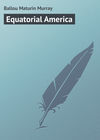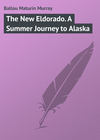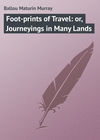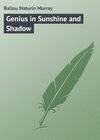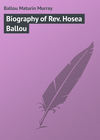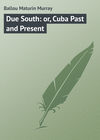Loe raamatut: «Under the Southern Cross», lehekülg 20
There is a green stone – nephrite – native to New Zealand, which is prized by the women for personal wear, and which admits of a high degree of polish. This stone in various shapes is worn as ear-rings, amulets tied about the neck, or made into beads; it is sometimes worn bracelet-fashion about the wrists or ankles. There is another and less common ornament worn by the Maori women; namely, a small pink or white feather thrust through the cartilage of the nose, the ends hanging down on either side, shading the upper lip like a moustache. This recalled the brass and silver rings worn through nose and lips, as seen in South Africa and the Straits Settlements. The young women of the tribes that are brought most in contact with the whites are giving up the tattooing process upon their faces; but those of middle age, or older, are defaced by blue lines about the lower lip and the chin. The pride of the women is to wear a short skirt of some high-colored material, and to wrap themselves in a blanket of the "loudest" pattern, – flaming red or yellow being preferred. The men affect more the dress of Europeans.
The Maoris differ in many essential particulars from most savage races with whom we have chanced to meet. Unlike the American Indian, the Maori is neither treacherous nor deceitful. He does not, like our American savage, foster a spirit of secret revenge, but when his enmity is aroused it is openly displayed and exercised, man-fashion. This has been a tribal trait with the Maoris for centuries. Before declaring war the Maori always gives his enemy fair notice. But for ages he has been accustomed to go to war upon imaginary grievances; or, to put it more clearly, his great object was to make prisoners, and when made, to cook and eat them.
The early Maoris, even so late as sixty years ago, looked upon war – what we should call civil war; that is, fighting one tribe with another – as being the only legitimate object of life. No two tribes, however nearly allied, were proof against an ever present liability to fall out with each other and engage in internecine strife. An authentic anecdote was told to us illustrative of this propensity to fight where no principle whatever was involved. A certain chief of a tribe living near Rotorua received a message from a neighboring chief which he construed into an insult; and he indignantly declared that the sender would not have ventured upon such a message had he not known and counted upon the superiority of the weapons of war which he possessed, which, it seemed, embraced a number of European fire-arms. When this imputation of unfairness and cowardice came to the ears of the first chief, he divided all his weapons into two lots, and sent for his rival to come and choose between them. This done, of course there was no further excuse for not fighting. The tribes fought a long and bloody battle, followed on both sides by a great feasting upon each other's prisoners! Here was united, most indisputably, a spirit of chivalry with that of ferocity. In these days, however, the Maoris have settled down to a life of quiet, and could hardly be more peacefully inclined; they are now as lazy and listless as the Arabs.
It is surprising how well these Maoris got along without civilization. It is fully as surprising to see how they wilt and fade away with it. Whether the white man has been upon the whole of any advantage to them is certainly an open question. They originally possessed a language composed of a copious vocabulary, and also a complete social system that answered their purpose. Their houses, rude as they were, kept out the heat of the summer sun and retained the necessary warmth in winter, – and this in a degree quite superior to European houses. Their food-supply, eked out by cannibalism, was ample though not varied, while their natural condition involved few necessities. Their wars promoted a condition of robustness as well as a spirit of enterprise and activity. But with civilization came rum, tobacco, and laziness. Far be it from us to argue in favor of the savage life above that of the civilized; but to judge these savage races correctly or fairly, we must look at them from their own standpoint, not from ours.
CHAPTER XVII
The Maori Dog. – A Romantic Island. – Sinking of a Maori Fort. – Volcanic Destruction. – A Country of Boiling Springs. – Idleness. – A Lazy Race of Savages. – Native Religion. – A Fitful Geyser. – Sophia, the Famous Guide. – A Funeral Dance. – The "Haka" Performance. – Maori Improvidence. – Rubbing Noses. – Native Babies. – Church-Going and Card-Playing. – The King's Country. – Eloquent Aborigines. – A Sanitarium. – Sulphur Point. – Future of New Zealand.
The funeral wailings of the natives during the day were not sufficient to fill the measure of uncanny noise; so at night – those wonderfully bright moonlight nights! – the dogs seemed to feel it incumbent upon them to take up the refrain, and they howled frightfully by the hour together. The Maori dog is quite different from any other specimen of the canine race; he is a mongrel of decidedly conglomerate character, – the most remarkable fact about these creatures being that no two of them are at all alike, or seemingly of the same breed. Why the Maoris keep these dogs we cannot conceive; they certainly have no food to spare for them, and the poor creatures look nearly starved with their thin bodies and protruding ribs. At Ohinemutu every cabin had at least one dog, and frequently three or four of these animals were seen lying before the entrance. They rushed out and barked fiercely at the passing stranger, but there the hostile demonstration ended. Dogs are not more numerous, in proportion to the population, in Cairo or Constantinople, nor more neglected, than here. We suggested to one of the half-castes that it would be possible to utilize these animals for food, but he shook his head knowingly and said, "No, no; him got no meat on him bones." Their pigs run wild, and feed themselves on fern-roots and sweet weeds; but their dogs, not being herbivorous, fare hardly for food.
Unable to sleep on account of these canine disturbers of the night, we rose long before daylight on the third day of our visit to Ohinemutu, and awaking a couple of natives, took a row-boat over to the island of Mokoia, which is situated about four miles from the mainland, toward the centre of Lake Rotorua. This island is itself a sleeping volcano, lying now placidly enough upon the bosom of the waters, but originally thrown up from the bottom of the lake in some past century. Though the natives evidently thought us crazy to abandon a comfortable bed at such an hour, we only gave them the necessary direction and sat down quietly in the stern of the boat. It was just sunrise as a landing was effected on the island, when a sight was enjoyed which had not been anticipated. As the monarch of day showed his face above the volcanic hills, the effect was superb. Mokoia is a well-wooded island, and on the side farthest from Ohinemutu there is some level fertile land occupied by natives; indeed, there is here quite a Maori village. It was once a favorite missionary station, but as such was long ago abandoned. It is a sort of second edition of the villages lying about the Lake House on the mainland. When the missionaries were here they planted fruit-trees, which are still thriving and annually productive of pears, apples, peaches, and the like. One of the boatmen spoke English after the Maori fashion, and wanted to relate the love-story of the island, the Hinemoa legend; but we knew it already. We did listen, however, to the story of the blood-thirsty chief Hongi, who came hither when Mokoia was the stronghold of a prosperous tribe, and putting them to the sword, killed one half and more in a terrible hand-to-hand fight; after which he and his followers feasted on their bodies for weeks. We got back to the Lake House by mid-day.
The faulty and incomplete traditions of the natives concerning the last eruption previous to that of about a twelvemonth ago which occurred in the Hot Lake District, are entirely unsatisfactory; but the late terrible one which destroyed the beautiful pink and white terraces at Tarawera by one sudden throe of Nature, and by which nearly two thousand square miles of territory were sensibly affected, we know all about. The destructive demonstration lasted only six hours, but during that time the amount of lava, volcanic bombs, stones, and fiery substances thrown out by the burning mountain is beyond calculation. This volcanic outburst seemed to us just what might be expected at Ohinemutu at any moment. What signifies it that matters have remained in their present condition for perhaps a thousand years? The liability to an outburst is none the less on that account. Such is the history of all eruptions: centuries elapse of comparative quiet and seeming immunity from serious danger, – and then comes a great and awful explosion! Confined steam, boiling water, and burning sulphur must somewhere and somehow find vent at the surface. The seething and subdued roaring which never ceases are a constant warning to this effect. And yet here both Europeans and natives live on, and give the possible contingency never a thought.
Within pistol-shot of where these notes were originally made, there was before our eyes a half sunken point jutting out into Lake Rotorua which has "gradually subsided" – ominous words – so that but a small portion remains in view. In former times a pah, or fort, stood upon this point, the fate of which is briefly told. One stormy night a hoarse rumbling noise was heard, of more than usual significance, followed by a shrill sound of hissing steam. The trembling earth opened on the border of the lake, and the pah with all its people sank instantly into the raging fires below. No native can be induced to put foot upon what is left of this peninsula at the present day. The place is tapu. The visitor explores it alone, while his guide remains at a wholesome distance. Plenty of boiling springs, sulphurous vapor-holes, and seething mud-pools were found distributed over the place where the Maori pah and its people were engulfed.
Although by the late eruption, so far as is known, only one hundred and six persons – natives and Europeans – were destroyed, it included a whole Maori village which was instantly blotted out of existence, as was the pah on the peninsula jutting into the lake. The particulars of the late awful visitation, unequalled in the history of New Zealand, were sad and harrowing to listen to. There were instances where persons, still alive, were dug from the ashes and débris miles away from the crater, after being either buried, or partially so, for one and two days, though none of them survived more than a few hours after exhumation. We were told of an aged Maori whose cabin was miles distant from the burning mountain, who was exhumed after twenty-four hours' burial. He was over one hundred years of age, and survived three days after being recovered.
As to those far-famed and beautiful natural curiosities the Terraces, so completely is the configuration of the country changed for many miles in all directions, that it is quite impossible to discover their former site. An area covering nearly thirty square miles is now but one sad picture of desolation, strewn with ashes and lava, to look upon which was both depressing and awe-inspiring. One bowlder was pointed out to us which must weigh at least a hundred tons, that was thrown a quarter of a mile from the mouth of the crater.
The country over which the boiling springs and geysers occur is about a hundred and twenty miles long by seventeen or twenty wide, their activity varying somewhat at different localities. The fiery region extends beneath the sea after reaching the coast at the Bay of Plenty, being doubtless connected with several remote islands of the Pacific Ocean, – the immediate vicinity of Ohinemutu being apparently the centre of thermal development. It is only necessary in many places to make a hole a few feet deep by thrusting one's walking-stick into the ground, to bring forth a vigorous demonstration of the hissing steam. On first rising from sleep in the morning and looking out upon the remarkable scene, the low-lying dense clouds of vapor all about the hamlet give one the idea that the activity of the underground forces is greater in the night than during the day; but this is probably not the case. Except occasionally, when owing to some great unknown disturbing cause an unusual explosion takes place, the result varies but little at the surface from one year's end to another.
Is idleness infectious? One dallies with time in the midst of these strange phenomena, wandering among the native huts and their lazy, bronzed inhabitants, studying their gypsy life in all its phases. Everything is not quite agreeable, but all is quaint, novel, and interesting. We were shown some of the native carving which was executed a hundred years ago, mostly in the form of war-clubs and idols. There were images representing strange human beings of both sexes; but they were always grotesque, and often disgusting. There was not even an approach to excellence or a spirit of art observable in any of them. A certain consistency is discovered in the manners and customs of this people who live so nearly after the style and laws which governed their ancestors, and which have been carefully preserved for hundreds of years. Superstition is born in a Maori. He is a professed Christian, – that is, in most cases, – and accepts the Bible; but he is apt to give it his own interpretation: yet for that matter how many white religionists there are who do the same! These children of Nature follow their ancestral traditions modified by Christian influences. The original religion of the natives, if we can give it that name, consisted in a dim belief of a future state, quite undefined even in their own minds. It was largely a sort of ancestor worship, according to the missionaries, with a vague idea of some Being higher and better than anything human or finite. The sorcery which was universally practised among them filled up a certain measure of religious conviction and observance; nor is this by any means disused among them to-day. Many of the tribes can read and write, and educational facilities are freely offered to the rising generation by the English Government.
Whakarewarewa – we can write but not pronounce the name – forms another active volcano point, and is situated about four miles from the Lake House. For three days, whenever the eyes wandered in that direction, we had seen the hamlet, which occupies a side-hill, steaming away vigorously, and sometimes got a glimpse of the boiling water spouted high in air. The road thither lies over a perfectly level way in the midst of a plain which was doubtless overflowed by the lake in former times, and which is still so much under water as to be nearly navigable for a small boat. Here we found another tribe of Maoris surrounded by geysers, boiling pits, hot, spluttering, and unwholesome-looking mud-pools, with steam-holes innumerable. What a region of perpetual ferment it is! How busy must be the fiery agencies constantly operating in Nature's subterranean laboratory! Soon after entering the hamlet we passed a clear, blue boiling-pool of great depth, which is improved by the whole community for cooking purposes. In the sides of this out-of-doors stone and earthen cavity indentures had been made, where iron pots and wicker screens could be placed for boiling vegetables and other food.
The action of the largest geyser here was fitful and irregular, subsiding for a few seconds now and then, and again bursting forth with renewed power, throwing a column of boiling water thirty feet into the air with startling effect. We were told that this geyser when in operation often sent up such a column to the height of sixty feet. Much wandering over the earth's surface and knowledge of terrestrial affairs has taught us not to accept unchallenged the statements of even such worthy guides as our veracious Sophia. The fact as confirmed to us by ocular demonstration was quite startling enough, and exaggeration was certainly needless. This erratic geyser emerges from a large opening eight or ten feet in diameter worn through the split rock, and is of unknown depth, – a successful attempt to sound it being impossible, as the spray would envelop the operator and scald him to death.
The water from this geyser overflows a series of bowlders running down into a broad sulphurous basin, in which are many more boiling springs and yawning chasms, with here and there overheated flat stones upon which the natives bake their food. The bowlders and slabs over which the chemicalized waters flow, receive a yellowish deposit of sparkling silica, mixed with crystals of sulphur and gleaming sparks of black manganese, which all together form beautiful colors when the sun's rays break through the clouds of mist and play upon them. We were shown among the rocks a natural stone basin capable of holding thirty or forty gallons of water, into and through which the boiling waters could be conducted at will; and here, according to Sophia, her forefathers used to boil the heads of their prisoners into a palatable soup!
The action of the subterranean forces is more demonstrative here than at Ohinemutu, and the immediate sulphurous effect upon the atmosphere is much more dense. The matter thrown up from the depths consists of crystals of alum, soda, sulphur, arsenic, iron, and other chemicals, which form cones about the several chasms. After passing in and out among these geysers, boiling rivulets, hot springs, and steam clouds, one is glad to reach an elevation where the atmosphere is comparatively clear and pure, and where a long breath may be drawn with a degree of comfort. Standing upon an elevation overlooking the whole strange scene, the air filled with heated spray, steam, and sulphurous gases, forming all together a dense vapor which clouded the sunlight, it was impossible not to recall the picture of Dante's Inferno.
Our cicerone here, as the reader has already been partially informed, was the famous Sophia, a Maori woman who has acted in this capacity for many years, and who, as she herself deposed, was the mother of fifteen children, twelve of whom were still living. Her tattooed face is well wrinkled by the hand of time, though her activity in climbing the different points of interest is marvellous. She speaks English well, is gentle in voice and remarkable for her good manners, taking great care that those whom she conducts through these novel scenes shall see and understand every object of interest. On the green borders of all this volcanic confusion, as we were leaving Whakarewarewa, a fragrant little bouquet of the wild blossoms of the manuka were gathered and offered to us by a Maori girl, who felt so much overpaid by the shilling tendered her in return as to hesitate to receive it.
On returning to Ohinemutu we found extensive preparations going on in the Maori hamlet for a grand dance as a sort of winding-up ceremony to the four days of wailing and feasting over the death of the chief, of whom the reader has already heard. It was curious to see into what a state of excitement the natives could work themselves by means of dance and song. It recalled the infatuation and frenzy of the whirling Dervishes of Cairo. Alcohol could not more thoroughly excite them or stimulate their brains. In these exercises the women far exceeded the men in their extravagance of behavior, – jumping wildly up and down, thrusting out their arms and legs with perfect abandon and apparent unconsciousness, distorting their bodies and features, and twisting themselves generally into most impossible shapes. A dull, monotonous drum-beat was the only musical accompaniment, which was produced from a hollow log, both ends of which were covered with sheep-skin. The perfect concert of action among the dancers was marvellous, the more so because no consecutive purpose could be divined. The most weird and picturesque scene we can recall as witnessed in the Lake District was the performance of one of these dances by moonlight; but it must be acknowledged that the exhibition was more striking than decorous. Belonging to this tribe, and indeed to all that are visited by the whites, there is always a bevy of dancing-girls with a world of passion in their bold, luminous eyes, and a reckless disregard of all delicacy in their behavior, ever ready to perform before strangers for money. Some of these girls have very long, perfectly straight hair and a Jewish cast of features quite in contrast to the typical Maori faces. The indifference of parents to the conduct of their daughters is remarkable even for savages. One great objection to the haka, or native dance, is the beer-drinking which invariably accompanies it. The beer is brought from the hotel in an open bucket holding several gallons, and mugs being furnished, the performers partake freely, until by the time the dance draws to a close they are not in a condition to care much for the proprieties.
When one of these Maoris meets another after a long separation, the first thing is the mutual rubbing of noses, after which each of the parties begins to mourn and weep; but when they say good-by at parting, for however long a term, boisterous laughter is indulged in, – for it is a principle with them to speed the parting guest with feast, song, and hilarity. As the dead lies prepared for burial, the nearest relative first, and the closest friend after, rubs noses with the corpse. The natives here are in receipt of a considerable amount of money from the rents of lands, from pensions granted by the Government, and from acting in the capacity of guides, or as boatmen on the lake, and for performing other odd jobs for the whites. But they have no idea of economy or of saving anything for a time of need. The money which they receive goes as fast as it comes into their possession, and mostly for liquor and tobacco. When the money is gone, they will half starve themselves until a fresh supply comes in. After one of their continued wakes, at which food is so recklessly wasted, and all their spare cash expended in drinking and in other excesses, there follows a period of fasting, during which they live upon roots, berries, and stray bits of food picked up here and there. Such is their improvidence, that there are often times when they would absolutely starve were it not for the aid given gratuitously by the whites.
The Maoris at the present time are remarkably peaceable among themselves, – being never known, as we were told by local officials, to quarrel one with another, not even in their cups; for while liquor makes them foolish, it seldom makes them pugnacious. It was noticed that the fathers often carried the infant children on their backs, and in the same style adopted by the mothers. From this and other indications we got the impression that they are very kind to their children. One thing is certainly remarkable: these native babies never cry. We were a full week among them, witnessing their domestic life at nearly all hours, and we never heard the first cry from their lips. The same peculiarity as regards infants was also noticed by the author both in China and Japan.
As has been mentioned already, the funeral of one of their chiefs had drawn numerous representatives from other tribes to Ohinemutu, so that the number of aborigines was largely increased at the hamlet during our stay. The last day of our sojourning here was Sunday, a certain outward respect for which is observed by the natives as well as the few white residents at Ohinemutu. The little rude earthen-floored chapel, where a Roman Catholic priest officiates, was not large enough to accommodate both the resident tribe and their visitors at the same time, so they divided into two parties, – one half attending the services in the chapel, while the other half remained outside squatting upon their hams and playing cards for pennies. This seemed to us to be a little out of keeping with the church-going idea, but the average native is not at all amenable in his feelings to the conventionalities of the whites. Gambling with cards under the shadow of the church presented no anomalous aspect to these waiting worshippers. When the first audience had completed the usual religious exercises, – listening to prayers read in Latin, which of course were "all Greek" to them, – then the card-players changed places with them, and each party did as the other had just done. The afternoon was devoted to foot-ball by the men, and to bathing, gossiping, and smoking tobacco by the women. The food and stimulants had evidently become exhausted, as the visitors prepared to depart to their homes, but they were dismissed as usual with riotous tokens of joy.
The Government now owns a considerable portion of land in the Hot Lake District, which has been purchased at a fair price from the natives. The region called the King's Country contains at least ten thousand square miles, lying within clearly-defined boundaries. Its possession is sacredly secured to the Maoris by treaty with the Home Government of England. The aborigines however would in no contingency permit any encroachment upon their present domain; they would declare open war first, and fight for their rights. It is remembered by the whites that these natives can fight when incited to do so by their chiefs, and by a sense of being wronged. This was made clear enough in the early days of the European occupancy, when it cost the English thousands of lives and vast amounts of treasure before peace was finally brought about by the abundant concessions of Sir George Gray, the then Governor. The natives had very rude weapons in those days; now, however, they have fire-arms, and know how to use them. No foreigner can go into the King's Country without a native permit; no white man can travel there without a Maori guide; a murderer or other criminal cannot be pursued thither by a Government officer, except by first obtaining the proper permission. In these reserved lands the Maoris show a bold and warlike front. They enjoy full political rights in the government of the country, and return their own members to the National Assembly from the several districts in their province. The few educated members of the tribe are distinguished for a certain kind of eloquence, and can speak well and forcibly in behalf of the interests of their race. Like our own American Indians, they abound in poetical figures of speech and natural illustrations. Instances were related to us of some of these Maori representatives (generally with more or less European blood in their veins), who had electrified the legislative body to which they belonged, by their eloquent and powerful harangues, and who had more than once carried their purpose to a successful issue, against the manifest popular wish of the Assembly, by their clear force of argument and manly speech.
Government is building a sanitarium at Sulphur Point, as it is called, situated about half a mile from the Lake House. The baths attached to it are supplied with water from springs which are highly charged with chemical matter, each being quite different from the others in its peculiar properties, and supposed to possess special curative powers. There is also here a hospital already in operation under the control of the Government, in which there were a score of patients when we visited it. Several of these were grateful and enthusiastic for the benefit they believed themselves to have experienced by bathing in the ill-smelling waters. Said one to us: "I now leave my crutches under my bed; but when I came here two weeks ago I could not walk across my room without them. Now, however, I walk a mile in the open air, forenoon and afternoon, without any help, and have a grand appetite, with the digestion of an ostrich."
A large town has been arranged for by the authorities in anticipation of the future popularity of these hot springs. Broad, regular, and well-laid out streets have been graded and fenced, having nicely gravelled road-beds, lined with ornamental trees; but there are yet no dwelling-houses here except the very comfortable Hospital structure. There is, however, a grocery store, a Post-Office, and a Town Hall, – these last two being of brick. It seemed to us that the atmosphere of Sulphur Point must always prove an insuperable objection to its being adopted as a permanent home. The constant odor rising from the subterraneous fires not only excites disgust, but is disagreeably suggestive of the nearness to active volcanic agencies. The Lake House is situated upon a gentle elevation, thirty or forty feet higher than the lake, and overlooking the lands all about it; but Sulphur Point is nearly on a level with the water, and is so low that any rise of the lake would inevitably flood it, and it must always be very damp.
Yet invalids have come all the way from the North of Europe to test the advantages of these springs, and, as we were assured by the attendant physician, with almost unvarying success. A railway is constructing from Oxford hither which will connect Ohinemutu with Auckland direct, obviating the necessity for staging, which no invalid should attempt unless the road is in a very different condition from that in which we found it. The railway will doubtless be finished within a twelvemonth.
One must start before sunrise from Ohinemutu in order to reach Auckland on the same day, though the distance is only a hundred and sixty miles, all but thirty of which is by railway. We have shown that the road between the Lake District and Oxford is one requiring time to deal with. When we left the Lake House, the silvery gray of the morning was struggling through the clouds of hot vapor and sulphurous steam which hung over and about the place. The stage lanterns and those in the hands of the attendants cast a weird and fitful glamour all about us. A dog was baying down among the Maori cabins, albeit the hamlet as a whole still slept. The horses brought out from their stable into the crisp morning air were a little restless, and a hostler held the bits of the two leaders. Presently the driver called out, "All right! let them go!" and in a moment more we were rolling smartly away by the borders of Lake Rotorua.











